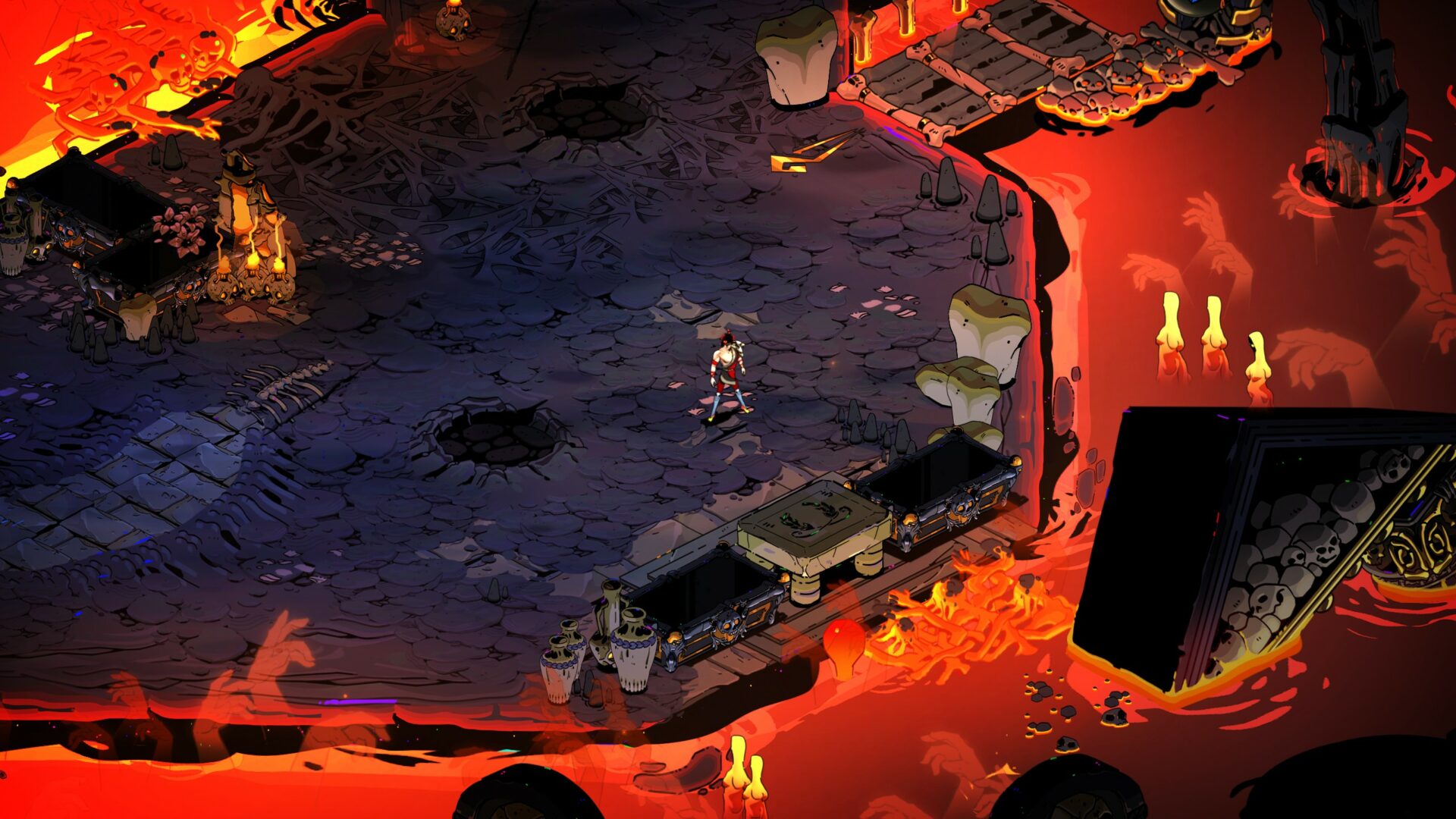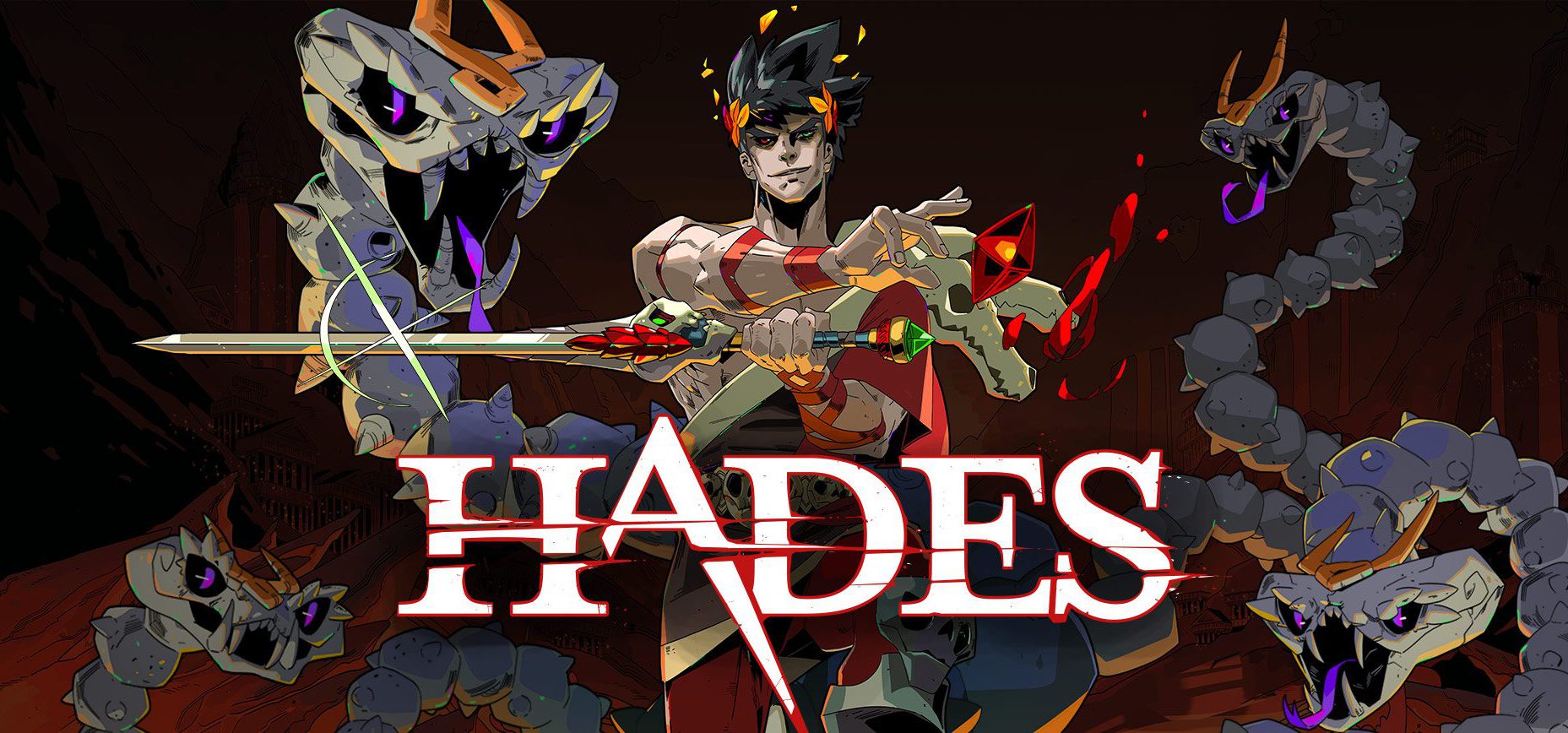Fight your way out of the underworld!
Released: Steam
Type: Single-player
Genre: Action Rogue-lite,
Dungeon Crawler
Developer: Supergiant Games
Publisher: Supergiant Games
Release date: 17 Sept, 2020


Introduction
From the renowned Supergiant Games, developers of Bastion, Transistor and Pyre comes Hades, an action rogue-lite inspired by Greek mythology. After over a year in Early Access, the game has finally been released in a complete form. You play as Zagreus, prince of the underworld.
Escape from Hell
Following a series of heated disagreements with his father, Hades himself, Prince Zagreus is displeased with his situation. This sparks a series of attempts to break free from the depths of hell. Despite being marketed as a rogue-like, the game is a rogue-lite, as parts of your progression are retained upon death. Instead of opting for a linear narrative, the game uses its genre’s formula to tell one which develops as you advance.
In most games, the narrative and gameplay are separated, the latter being told through cutscenes in between segments of interactivity. More often than not, this disconnect is brushed off by the fact that it’s just a game. That’s not the case here. Every gameplay mechanic is explained through the lore, bridging the two aspects. Since it’s set in Hell, enemies and the player respawning makes sense.
Characters respond to your actions in a natural way. Each time you encounter one, they likely have something to say about your activities, whether that be the enemies you’ve defeated, the people you bond with or the equipment you’ve collected so far. What’s impressive is that they have something new to say each time! I only heard the same lines on a few occasions.
Hades draws inspiration from Greek mythology. Most of the characters and lore is taken directly from the old myths; however, Supergiant Games offers their own spin on it. Thanks to a fun cast of characters, the narrative is both enjoyable and entertaining. Due to the lack of traditional pacing, the story doesn’t hold many surprises, but the progression of various scenarios left me speechless.
Every Death Is a New Beginning
The moment-to-moment gameplay plays like a dungeon-crawler, and sees you going through a series of chambers, battling enemies and obtaining upgrades along the way. Completing a room grants you a reward. Above the door to each chamber, you’ll see what item it compensates you with, adding a strategic element to the formula. As for the combat, it’s viewed from an isometric perspective.
It’s fast-paced, and requires you to familiarize with each enemy’s moveset to succeed. Dashing is the main way of avoiding damage, and doing so is always satisfying. You’ve got six weapons to choose from, each with its own set of moves. They all follow a basic premise of having a normal and special attack. You can also equip a Cast, functioning as a spell used to harm enemies. Since there’s no tutorial, you’ll have to figure out the controls yourself. Luckily, a visit to the pause menu will suffice. Your first weapon is the Stygian Blade, capable of heavy slashes and a devastating smash which blows nearby enemies away. My favorite was Coronacht, a bow viable for eliminating foes from afar. While the number of arms might sound strikingly low, all of them bring something new to the table. It’s easy to spend many hours mastering your favorite. Even so, their movesets are still accessible.
The enemy variety is decent; there’s just enough to keep it interesting, with the highlight being the occasional boss fight. There’s one at the end of every locale, as well as a few optional in between. I was surprised when the game replaced a boss with a new one that, although similar in design, hindered a feeling of tedium. Each escape attempt begins in the House of Hades. Other than being met with a disappointed father, there’s also the possibility of buying permanent upgrades. The main attraction is the Mirror of Night, which allows you to attain buffs by spending Darkness. These increase your odds of survival, such as dealing more damage by backstabbing, or allowing you to defy death once per run.
By talking to the House Contractor, you can renovate parts of the underworld. All upgrades for the House are purely cosmetic; think wall decor, paintings and furniture. However, there’s also the option of tidying up chambers. This includes new rooms, such as healing fountains, or golden pots that will net you coins when destroyed. These are purchased with gemstones, another of the many attainable supplies. I won’t go over all of them, as the selection is dazzling at first.
The last thing to do before heading out is picking a weapon. Unlike in other titles, you don’t acquire new weapons along the way on a run. There’s no relying on RNG to obtain your favorite, allowing you to specialize in a desired playstyle. On your escape, the Gods of Olympus will often interfere to bless you with boons. These are your way of building your character, functioning as abilities. Each God has their own set of them, often with a collective focus. Artemis, for example, is all about dealing critical damage. Meanwhile, Zeus grants you his famous lightning abilities.
Whether you want to be a jack of all trades or specialize in certain boons is up to you. Both are viable options, and it’s fun discovering new powers and ways to combine them. And don’t worry – there’s a lot! Each God has an extensive collection, and some of them only unlock after fulfilling specific requirements. There are many ways to combine them, allowing your creativity to run wild. It took me 27 hours, or 28 attempts, to complete a run. However, if you wish to experience the full story, you’ll have to finish it multiple times, a feat which took me 55 hours to achieve.
The Signature Style
Supergiant Games is known for its stylish approach to presentation. Hades continues this trend with visionary art direction and a diabolical soundtrack which fits the hellish setting. The underworld is at the top of its game here – never before have I seen a dreadful place captured with such beauty! The colors are vivid and the textures sharp. Utilizing hand-drawn 2D textures in a 3D landscape, it stands out among other art styles.
The character designs capture every detail of their striking figures, with the underworld’s residents appearing as fiendish as you’d expect. There is nothing to put a finger on; it’s exceptional. In terms of sound, there’s a good chunk of tracks to support the chaotic action, as well as the few quiet moments. Moreover, they never get repetitive. There’s something satisfying about ancient Greek music combined with heavy rock, a combination I didn’t expect.
Now, what if I told you most of the voice acting was done by members of the development team? This fact caught me by surprise, since the acting is of high quality. Due to the witty nature of the story, some character voices are exaggerated, but that’s what makes it enjoyable.

Verdict
Hades has no Achilles’ heel. An embodiment of passion and dedication, every aspect is fleshed out. With adrenaline-pumping combat, satisfying progression and a narrative that uses the rogue-lite formula to tell a dynamic story, it’s simply put one of the best in its genre. I was addicted to trying to escape from Hell. I didn’t want it to end, and even after completing the story, I still want to continue playing.










